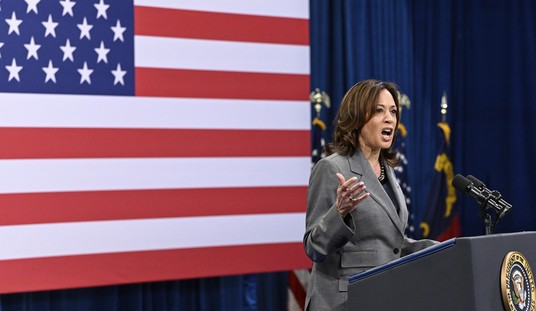Speaking through her attorney, Tulsa (OK) police officer Betty Shelby has adamantly maintains that she fired on shooting Terence Crutcher, a serial felon who was the subject of several 911 calls after he drove his vehicle into oncoming traffic and then abandoned it, apparently screaming that he perceived it to be “on fire” and about to blow up.
Such delusions are not uncommon among PCP users, and a vial recovered in the SUV after the incident was proven to contain the powerful perception-altering drug.
Crutcher shooting by Officer Shelby and tasing by Officer Tyler Turnbough was captured in a video filmed by a Tulsa Police helicopter circling overhead in a counterclockwise turn.
Critics of Officer Shelby maintain that the windows of Crutcher’s SUV were up, and that he therefore could not have reached into the vehicle.
I watched the video several more attempting to discern whether the windows were up or down, and came to a stunning realization: it doesn’t matter in the slightest.
The entire argument is a red herring.
What Really Matters?
Officer Shelby is adamant that we walked up to the vehicle and cleared it, noting that the windows were down before Mr. Crutcher walked up.
She then described how the encounter went down, which started more than 1 minute and 30 seconds before the helicopter arrived on station.
When Shelby approached the car, the doors were closed, and the windows were open, Wood said. She looked into the passenger’s side to make sure no one was on the floor of the car, and as she was getting ready to move to the driver’s side, she turned around and saw Crutcher walking toward her, Wood said.
Wood said that Shelby then said to Crutcher, “Hey, is this your car?”
Crutcher didn’t respond, simply dropping his head while continuing to look at Shelby, “kind of under his brow,” Wood said. Crutcher then began to put his hand into his left pocket, Wood said, adding that Shelby told Crutcher, “Hey, please keep your hands out of your pocket while you’re talking to me. Let’s deal with his car.”
Crutcher did not respond, Wood said, so Shelby ordered him again to get his hand out of his pocket. He then pulled his hand away and put his hands up in the air, even though he was not instructed to do so, which Shelby found strange, Wood said.
Shelby tried to get Crutcher to talk to her, but he simply mumbled something unintelligible and stared at her, Wood said. He then turned and walked to the edge of the roadway and turned to look at her, his hands still in the air, Wood said. He put his hands down and started to reach into his pocket again, Wood said, and she ordered him again to get his hands out of his pocket.
At this point, Shelby, a drug recognition expert, believed Crutcher was “on something,” Wood said, possibly PCP.
Shelby then radioed in that she had a subject “who is not following commands.”
“You can kind of hear a degree of stress in her voice when she says that,” Wood said.
Shelby then pulled out her gun and had Crutcher at gunpoint as she commanded him to get on his knees, Wood said. She pulled out a gun instead of a Taser because she thought he had a weapon, and she was planning to arrest him for being intoxicated in public and possibly obstructing the investigation, Wood said.
Shelby ordered Crutcher to stop multiple times as Crutcher walked toward the SUV with his hands up, Wood said.
But those orders cannot be heard in the audio from the dashcam video, which starts as another patrol car pulls up to the scene, showing Crutcher walking toward the SUV with his hands up as Shelby follows him, apparently with her weapon drawn and pointing at Crutcher.
As the video from the helicopter begins, Crutcher was “angling” toward his car while Shelby repeatedly commanded him to stop, Wood said. His hands were still in the air.
“As a police officer, you have to wonder — why would someone ignore commands at gunpoint to get to a certain location?” Wood said.
Crutcher’s arms came down, and he turned to face the car, Wood said, and he reached into the driver’s side window with his left hand. That’s when Shelby fired one shot and a fellow officer, Tyler Turnbough, deployed a Taser, Wood said.
Shelby believed that when Crutcher attempted to reach into the car, he was retrieving a weapon, Wood said. In her interview with homicide detectives, she said, “I was never so scared in my life as in that moment right then,” according to Wood.
In determining whether Officer Shelby’s shooting of Mr. Crutcher is lawful, we have to know to what standard to which she’ll be held accountable. Quite literally, what law applies in this situation?
The U.S. Supreme Court case Graham vs. Connor (1989) established that officers who use force must be judged on the totality of circumstances and a standard of “objective reasonableness.” That is, they must be judged on whether a similarly trained person in the same circumstance with the same vantage point and perspective as the officer in question would have a similar reaction, without the benefit of hindsight.
The murder of Deputy Kyle Dinkheller is an especially graphic example of why law enforcement officers never allow a belligerent suspect to return to their vehicle and reach inside. The chilling screams of Deputy Dinkheller have echoed through law enforcement training academies throughout the nation for 18 years as instructors have shown police cadets why it is so important for their safety, the safety of their suspects, and the safety of the public at large that they maintain control over the situation.
That brings us back to the perceptions held by Officer Betty Shelby and Officer Tyler Turnbough as Mr. Crutcher returned to his vehicle, against numerous commands to stop.
Here’s the helicopter’s view of the scene just seconds before Officer Shelby made the calculated decision to fire her handgun and Officer Turnbough then fired his taser either at the same time or split second later.

You’ll note from the photo that Crutcher’s hand is down by his waist at approximately the one o’clock position. We can’t see his left arm (it’s blocked by his body), but he does indeed to be learning forward, as if he’s reaching into the vehicle.
As investigators look into the shooting, they’re quite likely to concur with Officer Shelby that the positioning of Mr. Crutcher’s body and the angle it is leaning does suggest that he’s leaning and perhaps reaching with his left hand. Whether he his actually reaching into the vehicle as Officer Shelby perceives, or it is merely hidden by his body lean and it just appears that he’s reaching into the vehicle is ultimately immaterial.
Terence Crutcher was going to be arrested for being intoxicated in public (and not for the first time), but resisted arrest (again, not for the first time), and appears to be reaching for a weapon (yet again, not for the first time).
I’d argue that under the totality of the circumstances, it is very reasonable for Officer Shelby to suspect that a non-compliant suspect whom she suspected of being intoxicated on PCP was reaching for a weapon when he lowered his hands and leaned hard with his side in a motion that appears consistent from her perspective at the rear of the vehicle with someone trying to reach inside it.
As Officer Turnbough made the decision to discharge his taser just a split-second later, it appears that he, too, was under the impression that Mr. Crutcher was a potential lethal force threat and possibly reaching for a weapon.
I sincerely understand the Crutcher family wanting to believe that Terence Crutcher, who has a family-admitted history of PCP abuse, was turning his life around.
But investigators are likely to understand why Officer Betty Shelby thought that Mr. Crutcher was attempting to reach for a weapon considering the totality of circumstances and a standard of objective reasonableness.
Terence Crutcher’s death, while certainly tragic for everyone involved, was not a criminal act.
UPDATE: Tulsa County District Attorney Steve Kunzweiler has announced that Officer Betty Shelby will be charged with 1st degree manslaughter for Terence Scott’s death. That’s not entirely surprising considering the political pressure being brought to bear on his office at this time.
Officer Shelby will have her day in a court of law instead of in a court of public opinion.
We will be very interested to follow this case as it develops.







Join the conversation as a VIP Member